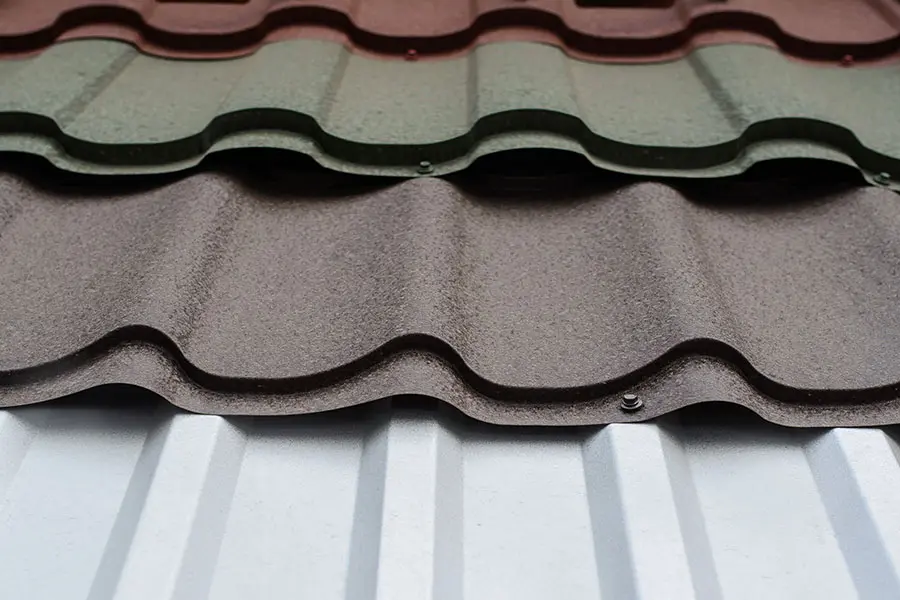The Relevance of Picking Knowledgeable Roofing Companies Gainesville Florida
The Relevance of Picking Knowledgeable Roofing Companies Gainesville Florida
Blog Article
Best Practices for Ensuring Correct Roofing Air Flow
Making certain correct roofing air flow is important for the long life and effectiveness of a roof system. A balanced consumption and exhaust air vent proportion, generally 1:300, plays a crucial duty, with intake vents preferably positioned at the lower edge of the roofing system for amazing air access and exhaust vents at the optimal for cozy air leave. Regular evaluations to determine obstructions and maintain clear air flow are vital. Maintaining insulation away from vents is important to prevent air movement restriction. Recognizing these fundamental components establishes the phase for more detailed understandings right into installment and upkeep practices that can substantially improve your roof's performance.
Understand Ventilation Fundamentals
Appropriately understanding air flow essentials is important for making sure the durability and efficiency of roof. Reliable air flow mitigates dampness accumulation and temperature level extremes in the attic, both of which can bring about considerable structural damages over time. A well-ventilated roof covering helps in protecting against typical problems such as mold and mildew growth, timber rot, and ice dams, which can endanger the integrity of the roofing products and the underlying structures.
The main goal of air flow is to help with the activity of air, enabling a constant exchange in between the interior and outside atmospheres. This equilibrium is attained via a combination of consumption and exhaust vents that interact to keep optimal airflow. Intake vents, commonly located along the eaves or soffits, enable fresh air to get in the attic room, while exhaust vents, usually situated at or near the roofing system ridge, make it possible for warm, humid air to escape.
Key variables affecting the performance of roofing system ventilation include correct positioning, appropriate sizing, and ensuring that both consumption and exhaust vents are unblocked. Normal inspection and upkeep are critical to determine potential clogs, damages, or inefficiencies in the air flow system, thereby safeguarding the roofing's efficiency and durability.
Kinds Of Roofing System Vents
Roof covering vents play an important function in keeping efficient attic ventilation and, by expansion, the overall health of the roof. Numerous types of roof covering vents are offered, each with special benefits tailored to specific roofing needs. Ridge vents, for instance, are mounted along the roofing system's optimal, allowing cozy, humid air to leave from the attic room. They offer constant air flow and mix flawlessly with the roofline, making them both reliable and cosmetically pleasing.

Soffit vents are set up under the eaves and operate in tandem with roof vents to make certain a well balanced consumption and exhaust system. By allowing cooler air to get in from below, soffit vents facilitate the expulsion of hot air through top vents. Gable vents, located on the outside wall surfaces of the attic room, offer an additional reliable option, specifically in homes with gable roofing systems.
Analyze Your Current Ventilation

Next, think about the age and condition of your roof materials and ventilation components. Older systems may not follow current building regulations or may have deteriorated in time, decreasing Web Site their efficiency. Conduct a complete assessment to recognize any type of indicators of wear and tear, such as corrosion, damages, or gaps that might jeopardize the system's performance.
Furthermore, measure the attic temperature and humidity degrees. Heats and moisture can show inadequate ventilation - roofing companies gainesville florida. Use a hygrometer and thermostat to acquire exact readings, comparing them with outdoor conditions. Consistent inconsistencies recommend potential issues that need resolving.
Installment Best Practices
Reliable installment of roofing ventilation systems is critical for making certain optimal efficiency and durability. Correct installment starts with recognizing the particular air flow demands of the structure and the roof it covers. This entails calculating the correct proportion of consumption to wear down vents, typically adhering to the 1:300 regulation, which specifies one square foot of ventilation for every single 300 square feet of attic flooring area.

The positioning of vents is equally critical. Intake vents need to be mounted at the roofing's lower edge, frequently in the soffits, to permit amazing air to get in. Exhaust vents, on the other hand, ought to be mounted near or at the roof covering's peak to promote the leave of cozy, damp air. This develops a natural air flow that aids preserve temperature level and dampness equilibrium within the attic room area.
Seal all vent connections carefully to avoid air leakages and prospective water seepage. Usage high-quality materials and comply with producer guidelines to ensure toughness and effectiveness. In addition, integrating ridge vents with baffles can significantly improve air flow effectiveness by avoiding wind-driven rain and snow from getting in the attic.
Eventually, precise installation of roof covering ventilation systems mitigates potential problems such as mold development, ice dams, and architectural damages, guaranteeing the roof's honesty and the structure's overall health.
Regular Upkeep Tips
Consistency in maintenance techniques is fundamental to ensuring the lasting efficiency of roofing air flow systems. Normal inspections are essential, preferably executed biannually-- in the spring and autumn. Throughout these evaluations, ensure that vents are without debris, nests, and other blockages that might hamper air movement. news Inspect for any indications of moisture build-up or mold and mildew, as these can indicate inappropriate ventilation or leakages (roofing companies in gainesville florida).
Cleaning the vents is one more crucial task. Make use of a soft brush or a vacuum to remove dust and particles from intake and exhaust vents. Beware not to damage the air vent displays or louvers throughout the process. In addition, examine the attic area for any kind of indicators of water damage, which could jeopardize the stability of the roof covering system.
Appropriate insulation is just as essential. Ensure that attic insulation does not obstruct the vents, as this can drastically restrict airflow. If any type of insulation has moved or settled, rearrange or replace it to preserve an effective barrier.
Last but not least, change any type of harmed or missing components without delay. Busted vents, broken shingles, or scrubby blinking can all add to poor air flow and needs to be resolved without hold-up. Normal maintenance makes sure that the roofing ventilation system operates efficiently, consequently expanding the lifespan of the roofing itself.
Conclusion
Making certain appropriate roof covering ventilation is extremely important for maintaining the performance and sturdiness of a roof covering system. Adherence to the 1:300 consumption and exhaust vent ratio, paired with the strategic positioning of vents, is essential. Regular biannual assessments, debris cleaning, and ensuring insulation does not block air browse around here flow are vital methods. Carrying out these finest practices will certainly foster a well-ventilated roofing system, consequently reducing potential concerns related to moisture accumulation and excessive warm, eventually extending the roofing's lifespan.
A balanced consumption and exhaust air vent ratio, typically 1:300, plays a critical duty, with intake vents preferably positioned at the lower edge of the roofing for amazing air access and exhaust vents at the height for warm air leave. Consumption vents, usually located along the eaves or soffits, allow fresh air to enter the attic space, while exhaust vents, commonly situated at or near the roofing system ridge, allow hot, humid air to leave.
Soffit vents are set up under the eaves and work in tandem with roofing system vents to make certain a balanced consumption and exhaust system. By permitting cooler air to enter from below, soffit vents assist in the expulsion of warm air through top vents. Adherence to the 1:300 intake and exhaust air vent proportion, combined with the critical positioning of vents, is vital.
Report this page